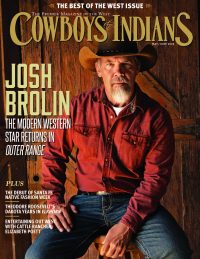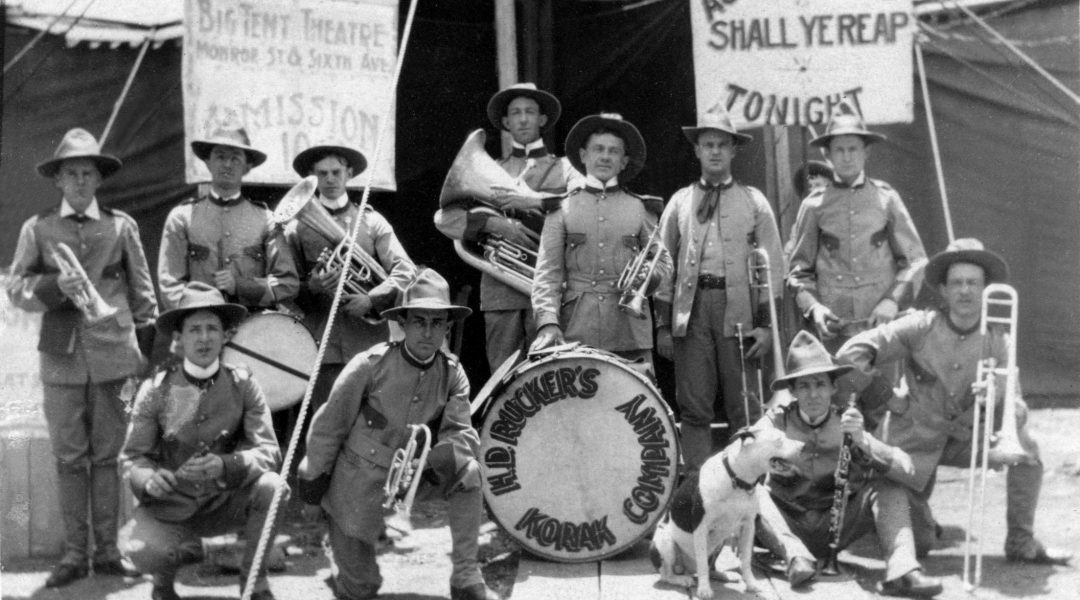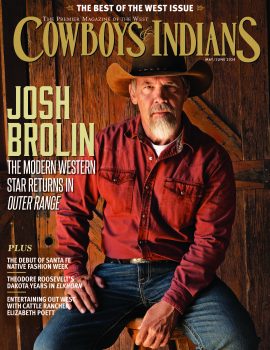
Snake oil, diamonds & country music made for one heckuva show.
DR. N.T. “Nevada Ned” Oliver had never been anywhere near Nevada when he began managing traveling shows for the Kickapoo Indian Medicine Company in the 1880s. Nor were any of the Native Americans who performed in the company’s entertainments members of the Kickapoo tribe. And, truth be told, a case might be made that the medicines sold by the troupe were not among the most efficacious remedies produced by 19th-century American pharmacology.
Yet long after the caravan had rolled on to the next town, audiences remembered the mesmeric pitch of the medicine men costumed as Quakers, Indian scouts, silk-hatted professors, and figures of Asian mystery. From street corner, wagon bed, and opera house stage, they theatrically ballyhooed for tonics laced with lifesaving ingredients from nature’s pharmacy. On court-house squares, they preached the healing power of liniments fortified with oil from the rattlesnake, Gila monster, skunk, and bear. Under canvas, they testified for tooth powders, worm killers, electric belts, and liver pads.
The performances that drew the med-show patrons, as recalled by Nevada Ned in a 1929 memoir, consisted of “full evenings of drama, vaudeville, musical comedy, Wild West shows, minstrels, magic, burlesque, dog and pony circuses, not to mention Punch and Judy, pantomime, movies, menageries, bands, parades, and pie-eating contests.”
Add the occasional ladies’ nail-driving contest and the gentlemen’s longest-feet competition, and you can begin to imagine the Main Street exoticism of this showbiz niche that flourished from the end of the Civil War to the television age.
It seemed the entertainment itself lifted folks’ spirits, even if the tonics could not.
In its heyday in the late 19th and early 20th centuries, the Kickapoo Indian Medicine Company had as many as 100 units in the field. Effectively serving as a chain of peripatetic drug stores with entertainment on the side, the Kickapoo representatives sold oceans of the company’s cure-all Sagwa, along with wagon trains full of Kickapoo Worm Killer, Kickapoo Indian Salve, Kickapoo Liver Pills, and Kickapoo Indian Cough Cure.
When a Kickapoo troupe encamped in Rockford, Illinois, in 1892, the local Morning Star reassured readers: “Their performances are refined and moral, and ladies may come unattended. Nothing is said or done to offend the most fastidious.”
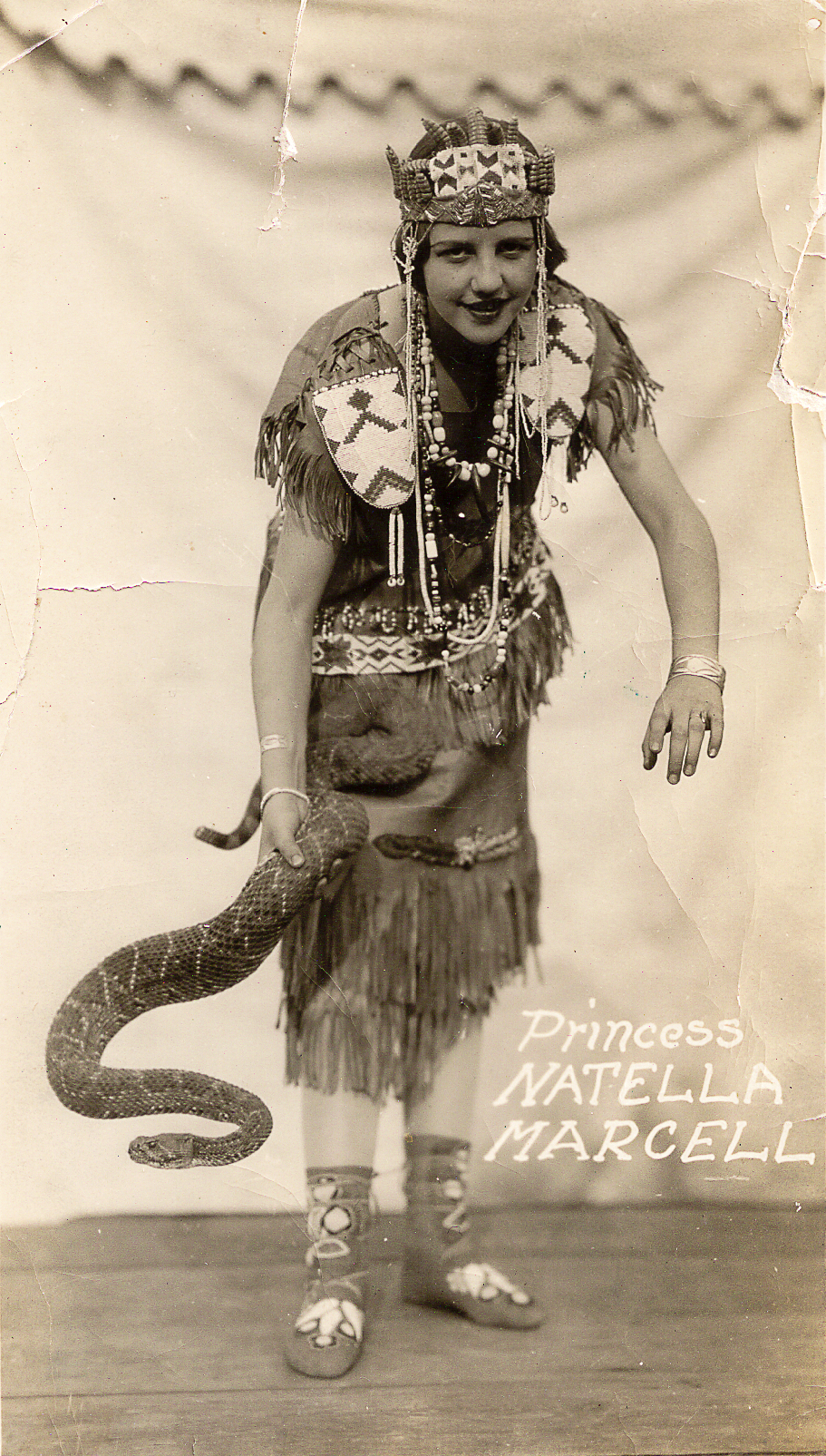
In Kalamazoo, Michigan, on the other hand, the Gazette railed against rival papers the editors felt were “booming” the Kickapoo company in 1890: “It is astonishing that people of ordinary common sense, let alone newspaper men, will be humbugged by such nonsense. Such people as the Kickapoo Indian Medicine Company ought to be prohibited by law from traveling through the country.”
Farther east in Pennsylvania, Col. T.A. Edwards — a former circus manager, Old West adventurer, and Civil War spy — organized the Oregon Indian Medicine Company in 1876. Advertising implied that the cure-all Ka-Ton-Ka and other medicines were prepared by Native Americans on the Umatilla Indian Reservation in Oregon. The fact of the matter was that Col. Edwards’ right-hand man was a former Indian scout, trapper, and trader named Donald McKay who in 1873 had led Indians from Oregon’s Warm Springs Reservation in a storied episode of the Modoc War.
Col. Edwards enlisted McKay and his brother, Dr. William C. McKay (both allegedly the sons of a Scotsman and his Iroquois bride), to help with the production and marketing of his tonics. Business was brisk, and around 1882 the colonel bought property in Corry, Pennsylvania, and erected a factory the size of a city block to keep up with demand. After a visit in 1888, with production in full swing, McKay wrote to his brother:“I hav only Bean here two days, and thar Was over two thousand Dollars orders Was sent for from Difrent Druges Stors from Difrent Parts of this state ... .”
Other Oregon products included Nez Perce Catarrh Snuff, War Paint Ointment, Warm Springs Consumption Cure, and Donald McKay’s Indian Worm Eradicator. When one of Edwards’ touring outfits visited Grand Forks, North Dakota, in 1896, a scribe for the local Herald complimented the performance while criticizing their remedies. “They have a strong company and for a medicine fake put up a good show.”
Just as many youngsters ran away to join the circus, many others ran away to join the medicine show. Long before he became a star with “Blue Yodel,” a 13-year-old Jimmie Rodgers left his hometown of Meridian, Mississippi, to perform in blackface in a traveling medicine show. Young Bob Wills joined up when a show came through Turkey, Texas, as did Orvon Autry when a “physic opera” played his Texas hometown of Tioga. As a singing cowboy movie star, the renamed Gene Autry would appear in medicine show scenes for several of his early films.

The father of future rockabilly queen Charline Arthur had to sign a release to allow his 15-year-old daughter to hit the road with a show selling the popular tonic Hadacol. Future R&B great T-Bone Walker played guitar and served as a straight man to a comic in Dr. Breeding’s Big B Tonic show in 1925. “The stuff he was selling was black and evil tasting,” Walker later recalled. “But it brought the people out!”
Hank Williams traveled with a medicine show as a teen, and then, after establishing his legend as the Hillbilly Shakespeare, he performed with the big daddy of all med shows, the star-studded Hadacol Caravan of 1950.
If you didn’t have the voice, a spectacular appearance could also draw crowds and move the merchandise. Crowned by a mass of flowing curls, Nevada Ned buttoned his velvet suits with $10 gold pieces, and his necklace of gold coins linked to a $50 gold slug. “To relieve this Quakerish simplicity,” he reminisced in 1929, “I wore $3,000 worth of real diamonds and two gold-mounted .44s. My mustache was long and prettily waxed to points, my clothes foppish in the extreme.”
But Nevada Ned had nothing on frontier fashionista J.I. Lighthall, who transformed himself from The Great Indian Medicine Man into The Diamond King. “All our kind were prima donnas,” avowed Ned. “And Lighthall most of all.”
Whether costumed in his sealskin outfit that sparkled with stars, or roostered up in red velvet, Lighthall always blazed with “what appeared to have been almost a washtub of diamonds,” reported Vic Daniels in a 1931 edition of the Frontier Times. Lighthall even maintained his lavish get-up just days before his death from the smallpox that he contracted at his performances on San Antonio’s Military Plaza in early 1886. Years later, parties appeared at his former campsite near the Alamo, digging for the stash of diamonds rumored to have been buried there when he died.
Doc Rucker, on the other hand — similarly outfitted in bling — put on full plays to hawk his wares, not always to a welcoming audience.
“Doctor Heliobas Dioscorynthius Rucker is in our midst,” derisively proclaimed the Kalamazoo Morning Gazette shortly before Christmas in 1899, noting that his medicine show “is as welcome in Kalamazoo [Michigan] as though he had just fallen out of a balloon into a goosepond.”
Rucker’s Famous Korak Wonder Company was self-billed as “the largest traveling medicine company in the world” and “the only one presenting high class plays with a change of program nightly.” Along with announcements for repertory performances of “Only a Woman’s Heart,” “Farmer Allen,” “A Wicked Woman,” and other plays, Rucker advertised that his Korak Wonder tonic and Korak Oil salve relieved folks of hundreds of feet of tapeworms, cured cholera morbus, removed corns and bunions, purified blood, and tuned up nervous systems
and personal plumbing. Korak reportedly even removed a lizard from one poor afflicted woman’s innards.
While Doc Rucker’s troupe presented “Uncle Tom’s Cabin” in the Grand Opera House, Rucker, sporting “a diamond on his shirt front as big as a piece of cheese,” stood at the door “cleaning microbes off his money and burning $10 bills just to smell the smoke.”
Though constantly on the road, Doc Rucker found time to develop the Korak Wonder Ranch near Hereford, Texas. In 1908, The Hereford Brand predicted that the Korak Wonder spread would become “one of the best improved Panhandle ranches on the Plains.”
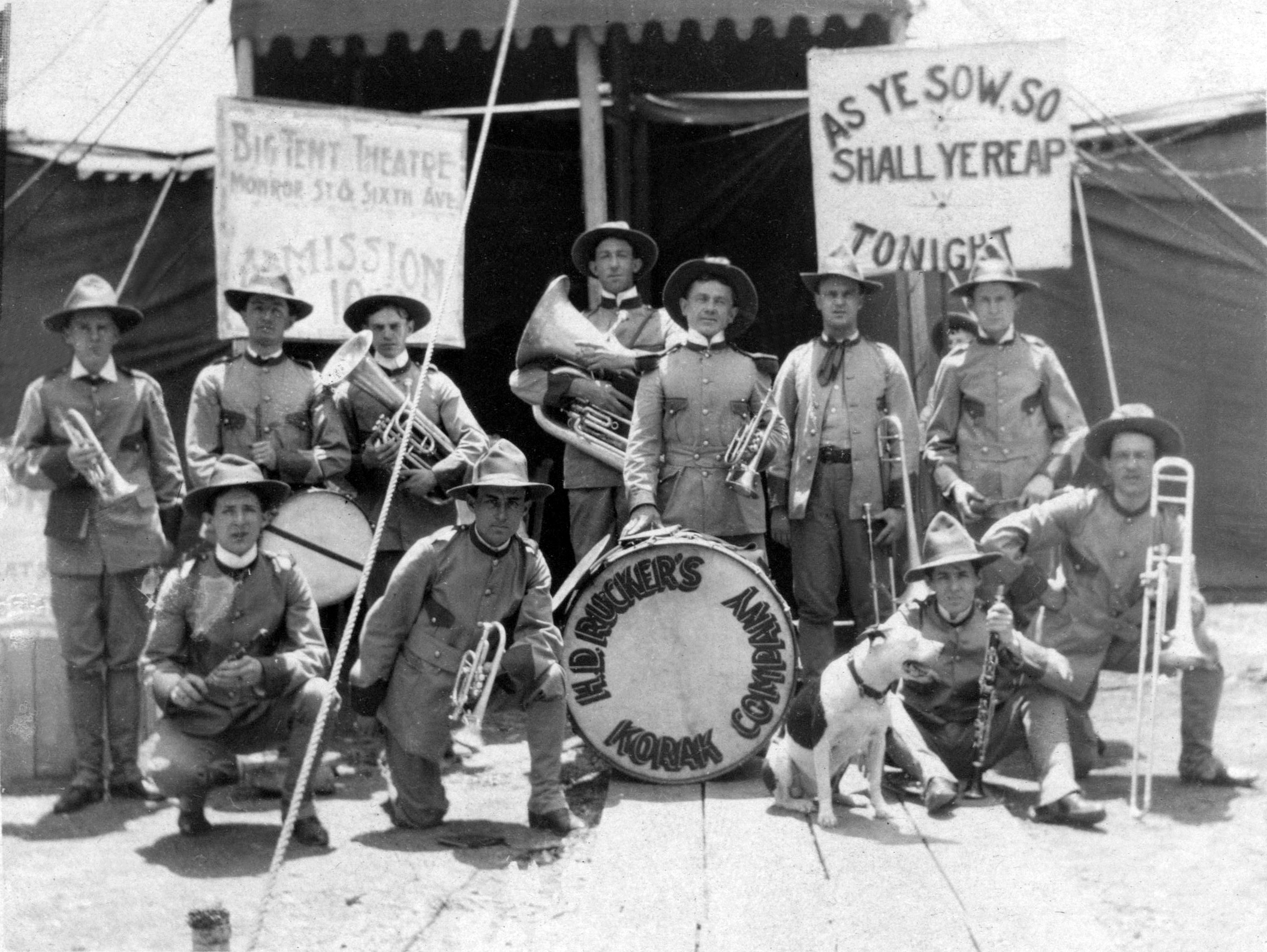
Born Milward Belmont Davis, “Doc” Marcus B. Marcell found that handle ill-suited for his first showbiz venture, something called the Mysterious Mr. Raffles, and changed his name in 1905. Developing a talent for photography, Marcell followed the rodeo from about 1908 to 1916, documenting the action at the Pendleton Round-Up, the Calgary Stampede, the Miles City Roundup, and other cowboy tournaments.
“In 1918, my great-grandfather had himself buried up to the neck for 14 days in the burning sands of Death Valley,” says David Leech of Calgary, Alberta. The dramatic treatment for rheumatism failed, and the 49-year-old Marcell is said to have been paralyzed for seven months.
Doc turned from sands to salves in the early 1920s, after obtaining the recipe for his Miracle Mineral salve from Sioux Indians in the Black Hills of South Dakota. “Soon, Doc Marcell’s Miracle Mineral medicine show had grown to 22 vehicles with an animal menagerie (including a grizzly bear), an ‘Indian princess’ rattlesnake charmer (Natella, my grandmother), and a band with my grandfather on banjo,” Leech says.
Though Marcell adopted the handle “The Nature Man” and sold canyons full of rattlesnake oil and Miracle Mineral, he was showbiz-savvy enough to bring the bling. Headquartered in Portland, Oregon, Doc was described in a 1928 Oregonian story as “an old-time clown in P.T. Barnum’s circus, traveler, adventurer, and wearer of extremely large diamonds.”
Today’s snake oil salesmen, of course, pitch their products from the idiot box and the Internet. But while sophisticated 21st-century folks may scoff at the lingo and techniques of the cure-all peddlers of yesteryear, some of their substance has proven to be more than mere placebo.
Consider the Gila monster, for instance, a frequent exhibit item on the old-time med-show stage. When cowboy musicologist
N. Howard “Jack” Thorp sat in on banjo with the Waco, Texas, show of one Professor Scott — the Wizard Oil King — in 1889, the longhaired pitchman fondled one of the venomous lizards as a demonstration of medical hypnosis. A patent medicine company in Philadelphia, perhaps impressed by the folk tradition that credited the reptile’s biology with aphrodisiac powers, called its liniment Gila Monster Brand Oil.
Although such physic-opera phenomena were long ago dismissed by popular culture and medical science as quackery, in 2005 the drug Exenatide, a synthetic version of a hormone found in Gila monster saliva — which also carries the venom — was approved by the FDA for treatment of Type 2 diabetes.
Perhaps Nevada Ned summed up the medicine show’s longevity and appeal best.
“I have no idea what the year 2130 will be like,” he wrote back in 1929, “except that I am sure of three things — death and taxes will operate, the Younger Generation will be viewed with alarm, and ‘Nature’s own remedies’ will be sold on the streets with song, dance, and ballyhoo ... .”
From the October 2014 Issue.



